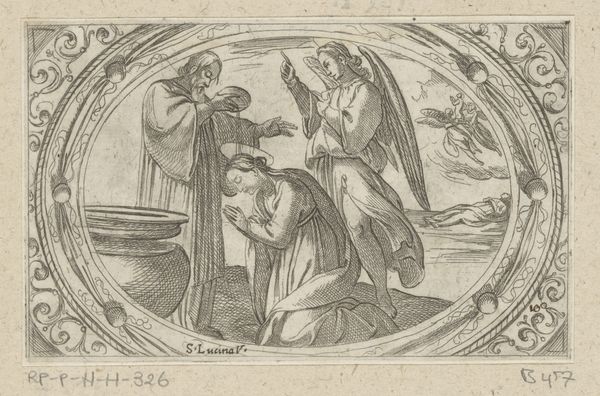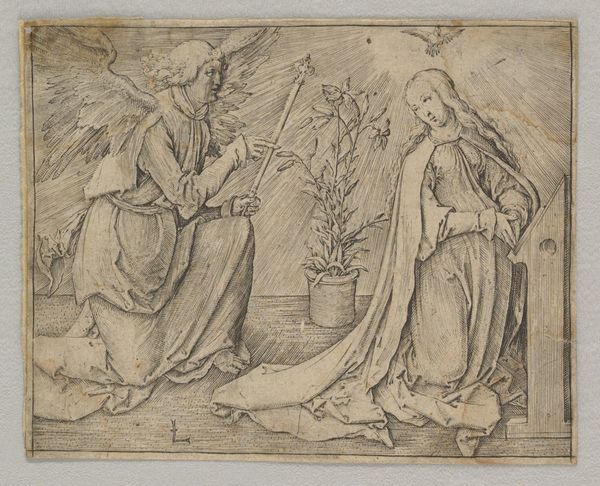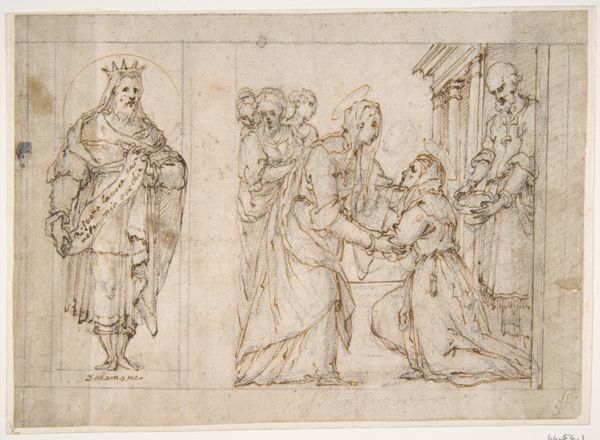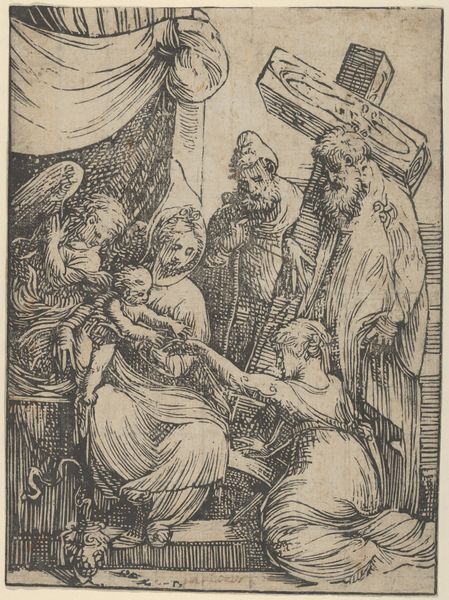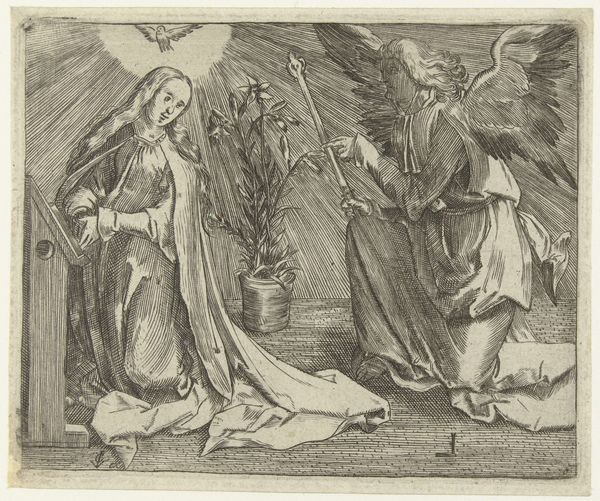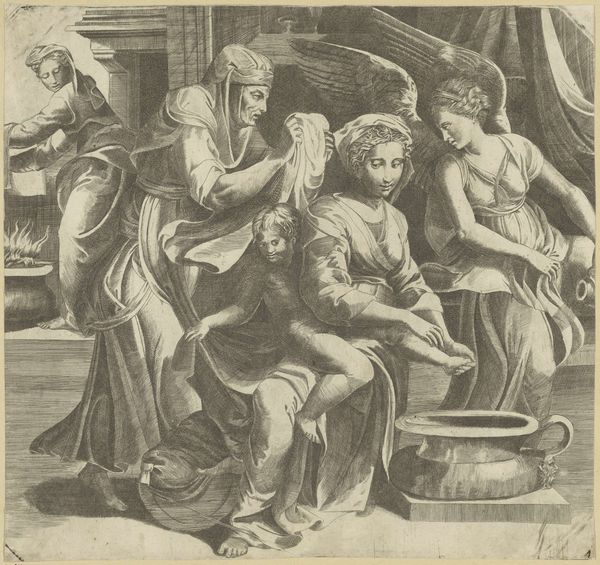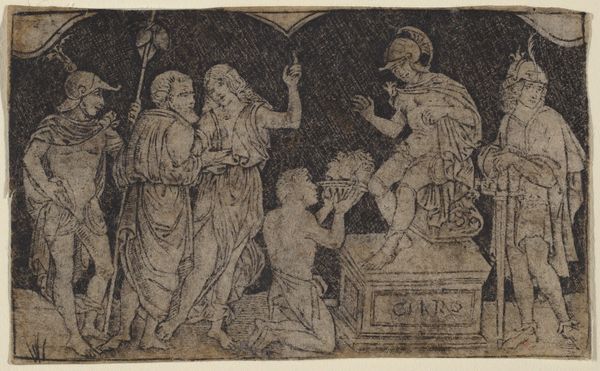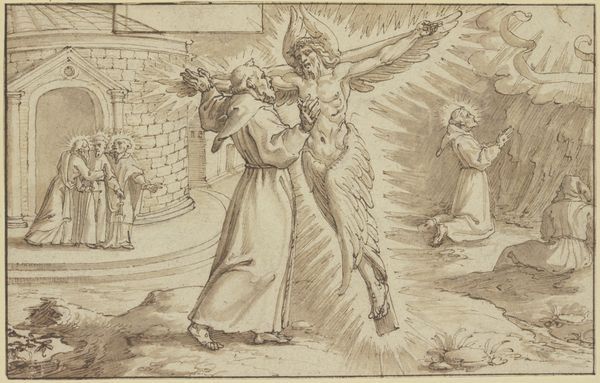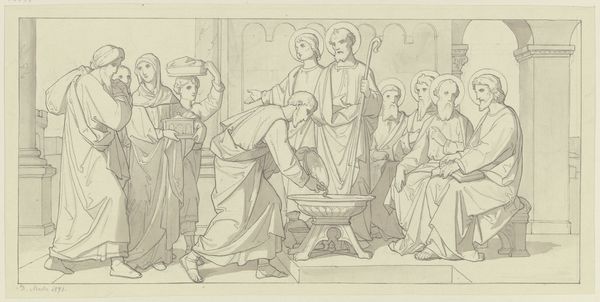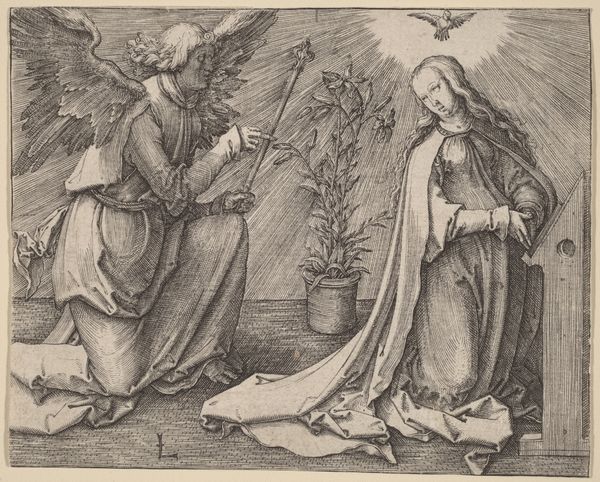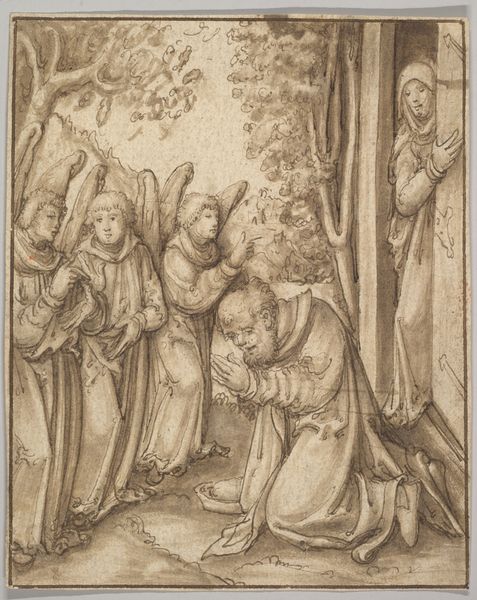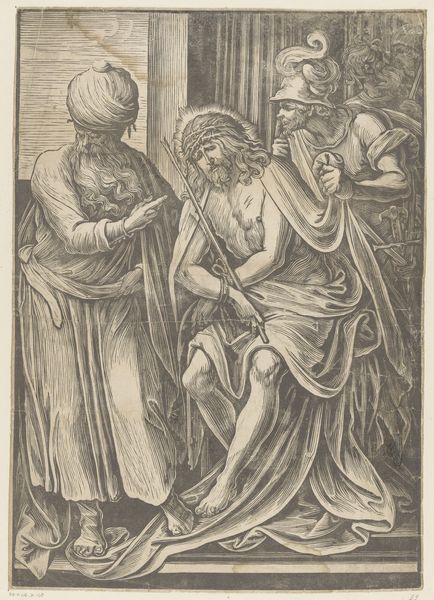
drawing, print, paper, ink
#
drawing
# print
#
figuration
#
paper
#
ink
#
history-painting
#
academic-art
Dimensions: 6 3/4 x 8 3/4 in. (17.2 x 22.3 cm)
Copyright: Public Domain
Editor: So, this is Charles Meynier's "Three Angels Visiting Abraham," created in 1793. It's an ink and paper drawing or print, very linear and quite formal, yet the emotion seems very present. What do you see in this piece, and how do you interpret the encounter represented? Curator: Beyond the immediate biblical narrative, consider how Meynier uses the neoclassical style, popular at the time, to subtly reinforce power structures. Who are the actors granted nobility in both form and gesture, and who are placed subserviently? Note the idealization of the angels, versus Abraham's supplicating pose and Sarah's domestic framing. How do those choices perpetuate specific ideas about authority, gender roles, and divinity? Editor: I didn't think about the gendered aspect so explicitly. I saw Sarah as part of the background, but you're right, it reinforces a particular social dynamic. What's the significance of presenting the angels as a unified group? Curator: The triad of angels underscores the divine collective, reinforcing the authority and unified message. This is further heightened when contrasted to Abraham's lone position, kneeling before the messengers. What social anxieties of the time do you think Meynier is addressing here, perhaps even unconsciously, through this carefully staged encounter? Editor: It’s interesting how Meynier employs the visual language of Neoclassicism to express spiritual themes. And seeing how these themes may also echo or justify power structures gives a fresh perspective. Curator: Precisely! It reminds us that even seemingly 'objective' styles can perpetuate dominant ideologies and prompt us to explore ways of using visuality to reflect a different vision.
Comments
No comments
Be the first to comment and join the conversation on the ultimate creative platform.
